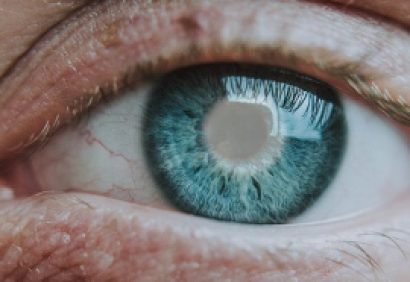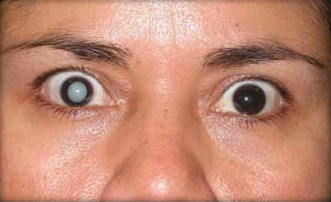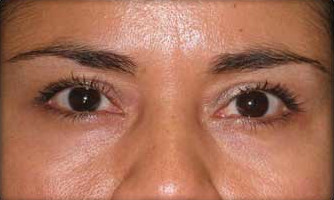Jump To:
Fast Facts
- Operation Duration: 30-60 Minutes
- Success Rate: About 99%
- Approximate Length Of Stay: 1 Week
- Improve Vision: 1-2 Weeks

Cataract Surgery
“Cataract Surgery” is a common and generally safe procedure to remove a cloudy lens (cataract) from the eye and replace it with an artificial lens to restore clear vision.
Here’s a detailed overview of the process:
Procedure Steps
Pre-Surgery Preparation
- Comprehensive Eye Examination:
- The ophthalmologist will conduct a thorough eye exam to assess the overall health of your eye and the severity of the cataract.
- Measurements of your eye will be taken to determine the appropriate power of the intraocular lens (IOL) that will be implanted.
- Medical Evaluation:
- A review of your medical history and current medications will be conducted to ensure there are no contraindications for surgery.
- Certain medications, especially blood thinners, may need to be adjusted or stopped before the surgery.
- Pre-Surgical Instructions:
- You may be advised to use antibiotic eye drops before the surgery to reduce the risk of infection.
- Fasting might be required if the surgery will be performed under general anesthesia, although most cataract surgeries use local anesthesia.
The Surgery
- Anesthesia:
- Local anesthesia (eye drops or an injection) is commonly used to numb the eye. You will be awake but should feel no pain.
- Sedation may be provided to help you relax.
- Procedure:
- Incision: A small incision is made in the cornea (the clear front part of the eye).
- Phacoemulsification: An ultrasonic probe is inserted through the incision. It breaks up (emulsifies) the cloudy lens into small fragments, which are then suctioned out.
- Lens Implantation: The artificial intraocular lens (IOL) is inserted through the same incision. The IOL unfolds and is positioned in the same place where the natural lens used to be.
- Closing the Incision:
- The incision is usually self-sealing and does not require stitches.
Post-Surgery Care
- Immediate Recovery:
- After the surgery, you will rest for a short period in a recovery area, and your eye will be covered with a protective shield.
- Post-Operative Instructions:
- You will be given eye drops to prevent infection and inflammation, and to control eye pressure.
- Avoid activities that could increase eye pressure, such as bending over, lifting heavy objects, or strenuous exercise.
- Follow-Up Visits:
- You will have scheduled follow-up appointments to monitor the healing process and ensure there are no complications.
Potential Risks and Complications
While cataract surgery is generally safe, potential risks include:
- Infection
- Bleeding
- Swelling
- Retinal detachment
- Dislocation of the artificial lens
- Residual refractive error needing glasses or additional surgery
Benefits of Cataract Surgery
- Improved Vision: Most people experience significant improvement in vision clarity.
- Enhanced Quality of Life: Better vision can lead to improved daily activities and independence.
- Reduced Risk of Falls: Clearer vision can help prevent accidents and falls, particularly in older adults.
Conclusion
“Cataract Surgery” is a highly effective procedure with a high success rate. It can greatly improve vision and quality of life for those suffering from cataracts. Following the surgeon’s pre- and post-operative instructions carefully is essential for optimal outcomes. SHIFA accompanies you step by step to achieve the best result of your eye surgery.
Compare Before and After Images


Cataract Surgery
Frequently Asked
Questions
Does Cataract Surgery last forever?
“Cataract Surgery” is usually permanent. The new artificial lens, called an intraocular lens (IOL), is designed to last the rest of your life. Most people do not need additional surgery after cataract surgery. Since the artificial lens is made of durable synthetic material, your cataract cannot return to that lens.
Is Cataract Surgery safe?
Cataract Surgery is a safe, routine procedure. Problems during and after cataract surgery are rare in an experienced surgeon’s hands. Your risk of complications may be higher if you have certain eye diseases or medical conditions.
How painful is Cataract Surgery?
While you may feel pressure, there should be no pain during cataract surgery. During the surgery, you might see changing bright lights resembling a kaleidoscope. Your cataract surgeon will check your well-being throughout, but you may not remember the details due to medication.
Why choose SHIFA for Eye Surgery?
SHIFA eye center is equipped with cutting-edge medical technologies that are on par with developed countries. The cleanliness and staff professionalism of Iranian clinics and hospitals are also exceptional. Iran offers the most affordable eye treatments in comparison with other countries.
SHIFA's Departments
Related Services
Featured Services
Glaucoma Surgery
“Glaucoma Surgery” is performed to reduce intraocular pressure (IOP) and prevent further damage to the optic nerve, which can help

Hand Surgeries
“Hand Surgeries” encompass a wide range of procedures performed to treat conditions affecting the hand, wrist, and forearm. These surgeries

Cataract Surgery
“Cataract Surgery” is a common and generally safe procedure to remove a cloudy lens (cataract) from the eye and replace

HIFU (High-Intensity Focused Ultrasound) Facial
“HIFU” (High-Intensity Focused Ultrasound) facial is a non-invasive cosmetic treatment that uses focused ultrasound energy to tighten and lift the
Our Blog Articles
- mehdi.mhj@gmail.com
5 Great reasons to use an online doctor to choose
Delve into the impact of digital life on mental health & discover practical strategies to...
Read More- mehdi.mhj@gmail.com
Benefits of Consulting With an Online Doctor
Uncover strategies to achieve a harmonious balance between professional and personal well-being....
Read More- mehdi.mhj@gmail.com
What are the benefits of online doctor booking
Explore importance of quality sleep & learn tips to improve your sleep, ensuring raise-up refreshed...
Read More- mehdi.mhj@gmail.com
Doccure – Making your clinic painless visit?
Explore the benefits & challenges of virtual healthcare appointments, along with tips for making good...
Read More





Comments are closed.